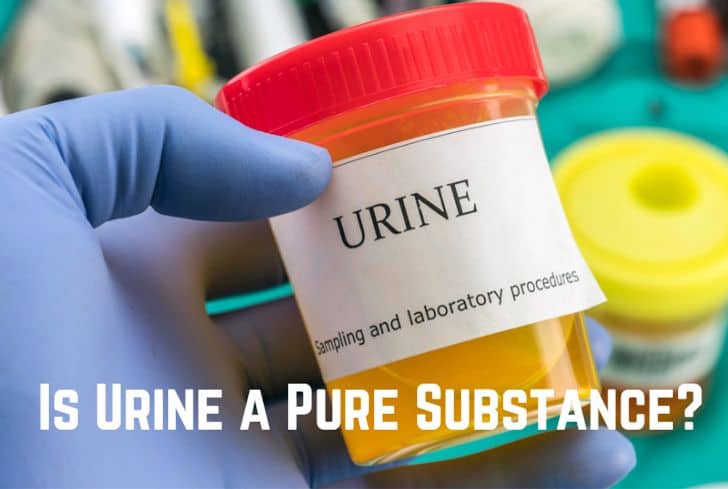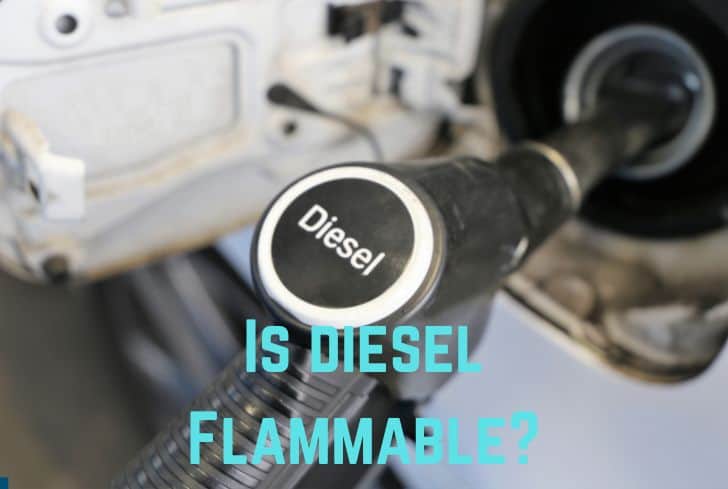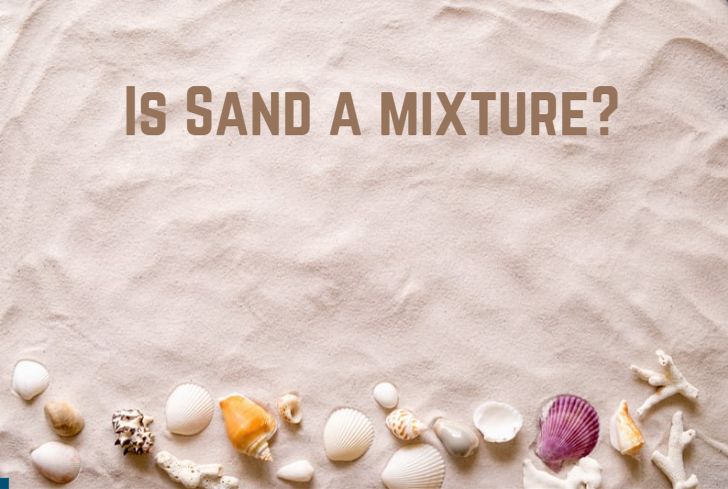Is Sugar Water Homogeneous or Heterogeneous? (Answered)
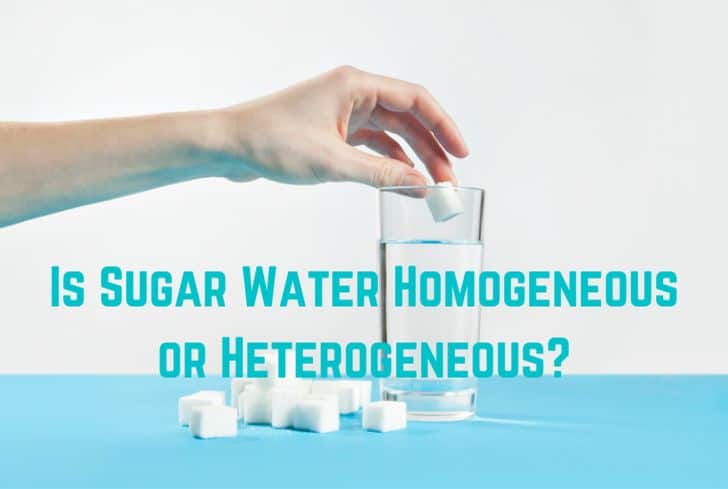
The nature of a mixture is often classified into either homogeneous or heterogeneous categories. These classifications help us know about the science of molecules better and make it easier for us to understand. The first solution one experiments on is probably water with some salt or sugar.
Both sugar and salt mix in water and disappear over time, but they appear as separate layers when in their initial, discrete stages. Hence, this raises the question – is sugar water homogeneous or heterogeneous? Same is the doubt with salt, or any other substance that can be tested on with water.
Read on to know more!
Read: Is Air a Heterogeneous or Homogeneous Mixture? (Answered)
Is Sugar Water a Homogeneous Mixture?
Yes, sugar water is a homogeneous mixture, although it takes some time to dissolve in water completely. A mixture can be classified as a homogeneous solution if all of its components are the same throughout. It should also appear the same throughout whether analyzed under a microscope or inspected through the naked eye, which is the case with sugar water.
Sucrose (C12H22O11) particles are larger than water molecules in physical size. The process may take some time, but sugar particles completely dissolve in water as salt does, becoming one with it and completely disappearing to the eye. The solution is uniform, and it is impossible to tell the difference between solid and liquid particles, hence, making sugar water homogeneous.
Having been obtained naturally from plants, sucrose units also break down easily when added to water.
Is Sugar Water a Heterogeneous Mixture?
No, sugar water is not heterogeneous. When you combine sugar and water, the particles form a singular mixture that appears the same throughout. The human eye would be unable to tell sugar crystals from water molecules, confirming that the liquid is not heterogeneous.
A mixture can be classified as heterogeneous when its substances do not mix together. The sizes of the particles do not matter, but as long as they do not blend or merge with each other, the solution they create will be termed heterogeneous.
In a heterogeneous mixture, the substances that do not mix together, usually end up in two or more layers, which are known as phases. Homogeneous mixtures do not have phases, as the solution would be a blend of substances that completely mix together. You can say that only one phase is visible, which is unlike a heterogeneous blend. The sugar and water in the solution can also be separated, by boiling or distillation, but that still does not make it heterogeneous as a mixture.
When you heat a mixture that was formed using a solid and a liquid substance, heating it will cause the liquid substance to reach its boiling point faster than the solid reaches its melting point. Some solids cannot even go through combustion and remain once the liquid has dissolved and turned into vapor.
Hence, through the process of crystallization, and heating the water faster, you can obtain pure sugar crystals. You can also try to evaporate the sugar-water solution in order to do the same, as it requires the same heating and vaporizing. However, the melting point of sugar is 180°C, so this method can cause the sugar obtained to be burnt.
Why is Sugar Water Homogeneous?
Sugar molecules are polar substances that can easily disperse into the water. They are also more attracted to water molecules than their own, so when you put sugar into water, they scatter immediately and are not distinguishable from the liquid. The appearance, texture, and quality of the solution are constant throughout – which are all qualities of a homogeneous mixture. Hence, sugar water does not fall into the heterogeneous category.
As in a homogeneous mixture, there is only one phase – no layers of separate substances. In heterogeneous mixtures, all the components in the mix are either clearly visible or can be inspected as separate forms under a microscope. Hence, sugar water is homogeneous by nature.
Read: Is Urine a Pure Substance?
Why Does Sugar Dissolve in Water?
When you first put sugar into water, you will notice that it does not dissolve immediately as salt does. The size of the sugar crystals is larger, and if the quantity of sugar is a lot, then the mixture is technically heterogeneous at the initial stage. Upon being stirred or mixed by a spoon, sugar crystals break down to the size that is suitable for the sucrose to enter in between water molecules and blend. Since sugar crystals are more attracted to water, it ends up dissolving easily.
Two substances mixing in a homogeneous mixture does not lead to them losing their individual qualities. For example, when you add sugar to milk, the sugar dissolves, but it causes the milk to turn sweet. Sugar crystals are held together by the intermolecular force in between their molecules. The attraction is weak, but not as much as the bond between salt molecules. Hence, after it sinks to the bottom, it takes some time to slowly dissolve bit by bit.
The process can be sped up by stirring the sugar so that it breaks down and evaporates faster. Stirring also makes sugar spread and makes the attraction between water and sugar molecules quicker due to the energy passing through the mixture.
So why do sugar particles get easily attached to water molecules faster than their own bits? This is because the molecules that make up a solid substance have stronger bonds and also have more powerful structures. The intermolecular reactions are hence more secure and are easily able to get in between the gaps of water molecules. Once the layer of sugar settled at the bottom finally disappears and the liquid appears one color, you can say that it has dissolved.
What is a Homogeneous Mixture?
In science, the term ‘homo’ means ‘similar’, so a homogeneous mixture is one that is constant throughout in its appearance and texture. It also lacks any layers that you might find in a heterogeneous mixture and will appear to be fully blended. The substances in the mix cannot be separated through physical processes, and once they have mixed, they will seem to be one solution, so they can often be mistaken for a pure one.
Homogeneous substances can be separated by chemical processes – even if they may be in solid forms like a combination of brass and zinc.
What is a Heterogeneous Mixture?
In contrast to the word ‘homo’, in science, the term ‘hetero’ literally translates to ‘different’. A heterogeneous mixture is one where the appearance and the components of the blend are visible to the eye or can be separated both physically and chemically. There is no consistency, and if poured into a liquid, the substances may often form two or more layers, called phases. Unlike homogeneous mixtures, the color, quantity, and texture of the mixture appear inconsistent.
Even mixtures with more than one kind of matter will be called heterogeneous. For example, sand, which appears to be homogeneous, with one color throughout, is heterogeneous, because the sources of all its different contents are untraceable. It is a mixture of many tiny particles of eroded rocks, minerals, and discarded metals and stones.
Sometimes, homogeneous mixtures can also act heterogeneously when balanced improperly. In the case of sugar water, if you add more grams of sugar than water, then the solution will not mix and you will end up with a heterogeneous blend. Due to this, heterogeneous mixtures also have further classified categories.
• Colloid: A mixture is a colloid when there is a heterogeneous blend of medium-sized particles. They can be seen clearly, but are not big enough to be separated easily. Example – butter, milk.
• Suspension: A mixture is called a suspension when the particles in the blend are large-sized and can easily be seen, separated, and filtered. Example – a mix of flour and water.
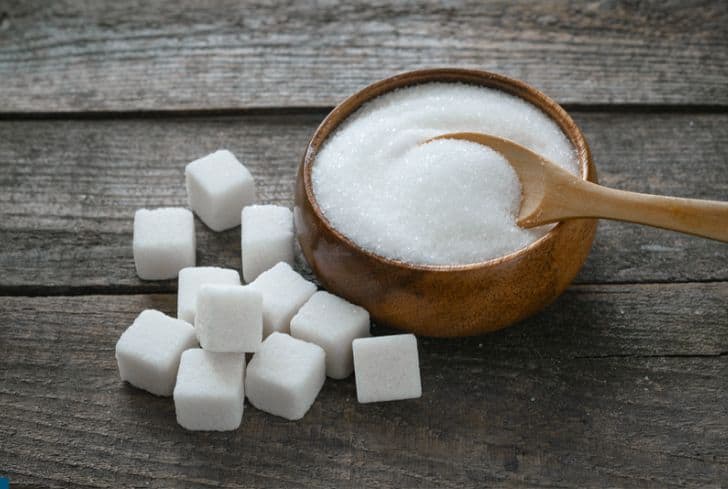
Why is Sugar Solution Not a Heterogeneous Mixture?
Sugar solution is not a heterogeneous mixture as sugar completely dissolves in water and makes the mixture consistent in appearance and texture. Additionally, if you were to raise the temperature of the water, then sugar would dissolve faster without the need for external forces as it is more soluble in warm water because of the larger kinetic energy that makes the water boil. These are all qualities of a homogeneous mixture, hence sugar solution is not heterogeneous.
Both water and sucrose also have polar molecules, which are easily drawn to each other due to their positive and negative sides. This is also the reason why it dissolves and becomes a homogeneous solution.
Why is Sugar Solution Homogeneous and Oil And Water Heterogeneous?
Sugar solution is a homogeneous mixture as the two substances completely blend with each other and combine to form one liquid that has the same texture and appearance throughout. On the other hand, oil and water never mix due to their polarizing natures. If you add oil to water, it will create two separate phases that never blend in, and can also clearly be seen by the eyes. These are all qualities of a heterogeneous mixture.
Sugar dissolves in water as both sugar and water have polar molecules – meaning that they sync and attract each other easily. Oil has a non-polar structure, so instead of attracting water molecules, it repels them because it is polar. Both substances are also liquid, so the strength of their molecular bonding is similar, and does not fill into each other’s gaps as sugar and water molecules. Hence, one is heterogeneous while the other is homogeneous.
Read: Is Soil Homogeneous or Heterogeneous
Final Thoughts
Hence we conclude that a solution made of sugar and water is homogeneous by nature, though it can be separated from each other by distillation which is the property of a heterogeneous mixture. This is because when put together, the attraction force between water and sugar is a strong one.
Sugar molecules get completely absorbed by the water molecules as the former is much weaker. On another note, two liquid substances like oil and water can be heterogeneous as the molecules are stronger and the former has a lower density.




